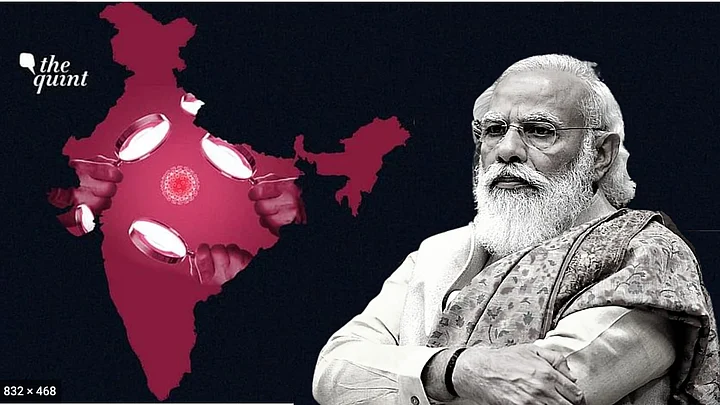A report published by The New York Times points out how India’s scientists and top agencies misguided the public about the urgency of the pandemic in order to suit the politics and narrative of the ruling Bharatiya Janata Party (BJP).
Eight months before the second wave devasted India’s population, government-appointed scientists applauded the stringent lockdown and reasoned in a study, that the lockdown and previous infections may have led to herd immunity. The study was played across the Indian news media after being released.
The results neatly fit Prime Minister Narendra Modi’s two main goals: Restart India’s tumbling economy, which was massively affected by the lockdown and to commence campaigning for the West Bengal Assembly elections.
Politics vs Science
Dr Anup Agarwal, a physician working for the Indian Council of Medical Research (ICMR), which reviewed and published the study, said that the conclusions drawn from the study might weaken India’s defence against the virus by providing a false sense of security, New York Times reported.
Agarwal took up his concern with the agency’s top official in October. However, he and another concerned scientist were reprimanded.
According to current and former government researchers and documents reviewed by The New York Times, part of the reason why Modi’s government missed the warning signs for the second wave was that scientists at elite institutions were forced by senior officials to downplay the threat so as to prioritise Modi’s political goals.
Agarwal was quoted as saying, “Science is being used as a political weapon to forward the government narrative rather than help people."
Data showing the risks was suppressed, according to the researchers. Moreover, a study by scientists that questioned the government’s efforts was forced to be withdrawn. Again, ICMR distanced itself from a third study that predicted the second wave.
Highlighting a culture of silence, Shahid Jameel, one of India’s top virologists and a former government adviser, said, “Science thrives in an environment where you can openly question evidence and discuss it dispassionately and objectively… That, sadly, at so many levels, has been missing”, New York Times reported.
Did India Downplay the Threat of COVID?
Vijay Chauthaiwale, a member of the BJP, defended Modi saying that no complacency was contributed by him, he said, “Prime Minister Modi has never ever said to lower the guard.”
However, there is enough evidence of declarations of premature victory, endorsement of unscientific ways of treatment, and downplaying the seriousness of the pandemic.
For instance, months before the second wave hit the country, Modi boasted in January this year, that India had “saved humanity from a big disaster”.
Former Health Minister Harsh Vardhan, said in March 2021 that the country was “in the endgame of COVID-19.”
Indian Council of Medical Research and Islamophobia
Fake news and misinformation about how Muslims caused the spread of the virus led to religious hatred, which was fuelled by the government blaming the virus outbreak on the Tablighi Jamaat, spurring attacks against Muslims by Hindu nationalists.
In June 2020, a study commissioned by the ICMR concluded that Modi’s lockdown had slowed but would not stop the virus’s spread
However, the authors withdrew it within days. The agency, saying the study’s modeling had not been peer-reviewed, wrote in a tweet that it “does not reflect the official position of ICMR”.
Further, in July 2020, ICMR’s director general, Balram Bhargava issued two directives that were seen as politically motivated:
The first directive called on scientists at a number of institutions to help approve, in just six weeks, a COVID vaccine developed by Indian scientists.
Bhargava had said the agency aimed to approve the vaccine by 15 August, an event at which Modi frequently urges the country toward greater self-reliance. “Kindly note that non-compliance will be viewed very seriously,” the directive read, New York Times reported.
Dr Bhargava’s second directive, issued in late July 2020, forced scientists to withhold data that suggested the virus was still spreading in 10 cities, according to emails and scientists familiar with the work.
Naman Shah, a physician who worked on the studies, was quoted as saying, “This is a government that clearly has a philosophy and history of trying to assert power by capturing every institution and making it an arena for political struggle.”
Meanwhile, as the second wave struck in April, Indian health officials recommended treatments that the government’s own scientists had found to be ineffective.
One was blood plasma. The agency dropped the recommendation in May this year.
The government still recommends a second treatment, the Indian-made malaria drug hydroxychloroquine, despite evidence that it is ineffective.
Dr Agarwal was further quoted as saying, “If you want to work somewhere for the rest of your life, you want a good relationship with people. You just be nonconfrontational about everything.”
Agarwal resigned in October last year and later worked in Gallup, NM. Now a physician in Baltimore, he said his experience with the agency had driven him to leave India.
“You start questioning your work, you know,” he said. “And then, you get disillusioned by it,” New York Times reported.
(With inputs from The New York Times)
